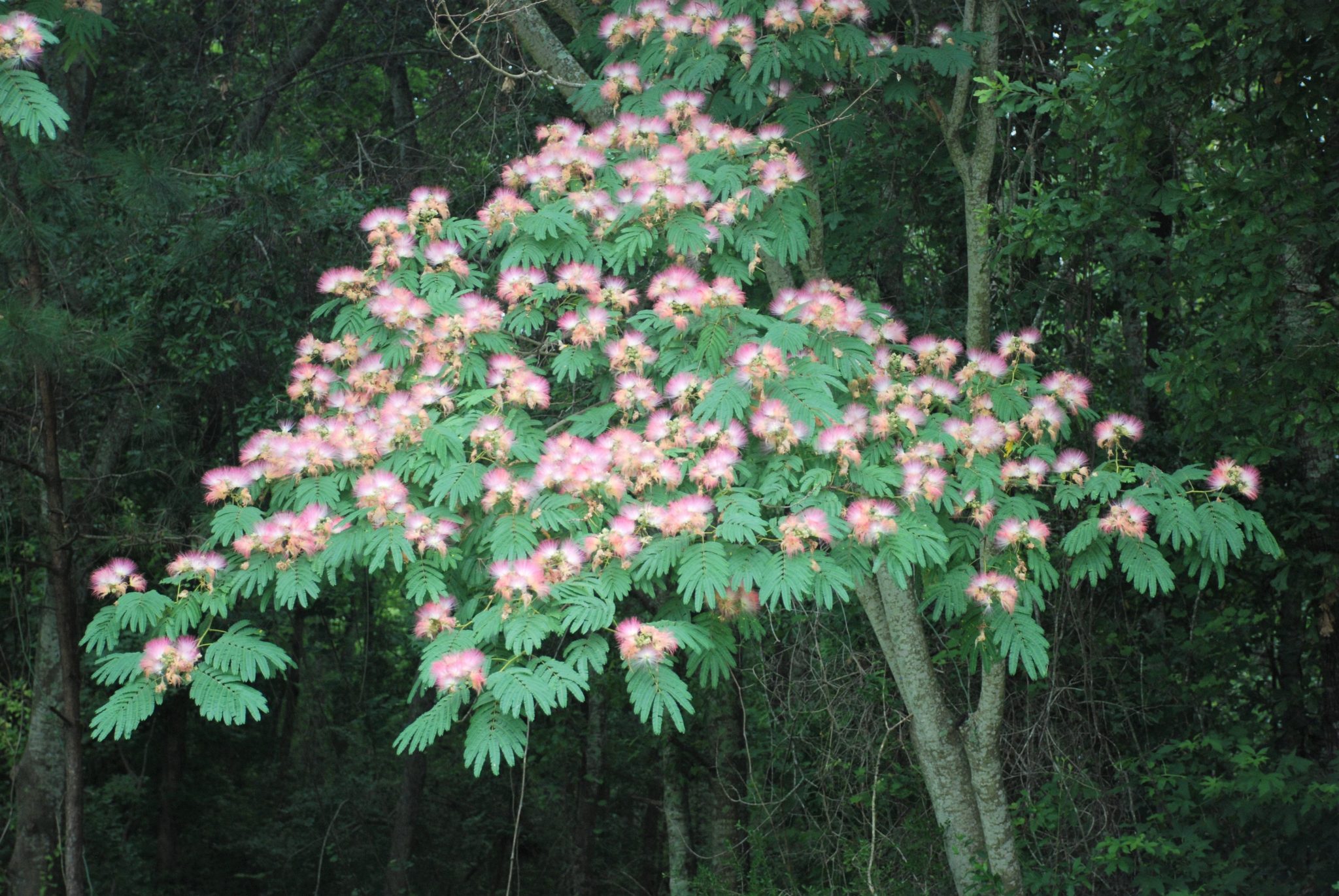Forestry & Wildlife

It’s not unusual to see invasive species growing along roadside, in woodlots, and backyards all over Alabama. The mimosa or silk tree (Albizia julibrissin) is one of the invasive species people may encounter. It is believed that the mimosa tree was brought to the United States in the 1700s by Andre Michaux, a French botanist. This tree is native to the Middle East and Asia and is a fast-growing tree, often reaching heights of 50 feet. It is adorned with pink blooms that usually appear May through July. The flowers are delicate and long with clusters of silky pink threads. They attract butterflies, bees, and hummingbirds. The leaves of the mimosa tree have a fern-like appearance. While this tree may be beautiful, it is also a highly invasive species that threatens the southern landscape.
Mimosa Invasion
An invasive species is an aggressive, non-native plant that is capable of outcompeting most native vegetation. Invasive species, such as the mimosa tree, can cause environmental damage by displacing desirable native plants. Songbirds are dependent on caterpillars and other insects that are typically found on native species to feed and rear their young. These food sources are becoming increasingly scarce because of the aggressive nature of invasive species like the mimosa tree.
The mimosa tree was introduced as an ornamental tree, but it escaped cultivation and is now growing in a variety of areas across the southeastern U.S. It competes with native species for light, water, and nutrients. It can be found growing along roadsides, along streams, in forests, and in clearings.
Characteristics
Mimosa trees produce a seed pod, each of which contain approximately five to 10 seeds. The seeds contain a neurotoxin which, can be toxic to dogs and livestock if ingested. The mimosa seeds can remain dormant for extended periods of time and are usually dispersed close to the parent plant. However, they can also be distributed by water and wind. When a tree is located along a river, its seeds have the ability to travel long distances before germinating.
Management Practices
Because the mimosa tree is so aggressive, good management practices are necessary. To begin the process of ridding a landscape of mimosa trees, people should cut them at ground level and use an herbicide, such as glyphosate, on the stump to prevent new growth. Glyphosate is most effective if painted on the stump as soon as it is cut. More information on the management of the mimosa tree and other invasive species can be found in the following Alabama Extension publications:
- Cut Stump Herbicide Treatments for Invasive Plant Control, ANR-1465
- Basal Bark Herbicide Treatment for Invasive Plants in Pastures, Natural Areas, and Forests, ANR-1466
Native Alternatives
Planting native species provides people with an opportunity to protect the forested land. By avoiding invasive species, people can encourage the growth of plant species that naturally grow in the Southeast. There are almost always native species available that have similar characteristics to non-native invasive species. Instead of the mimosa tree, try planting sourwood (Oxydendrum arboretum). This species blooms in the summer, and the flowers attract both native bees and honeybees. Another plant that blooms in June is buttonbush (Cephalanthus occidentalis). This large tree-like shrub needs moist soil and grows well in wet areas like pond and lake edges. It produces beautiful flowers in the summer that attract bumble bees and butterflies. Choose wisely and begin enjoying the native beauty of the region.

